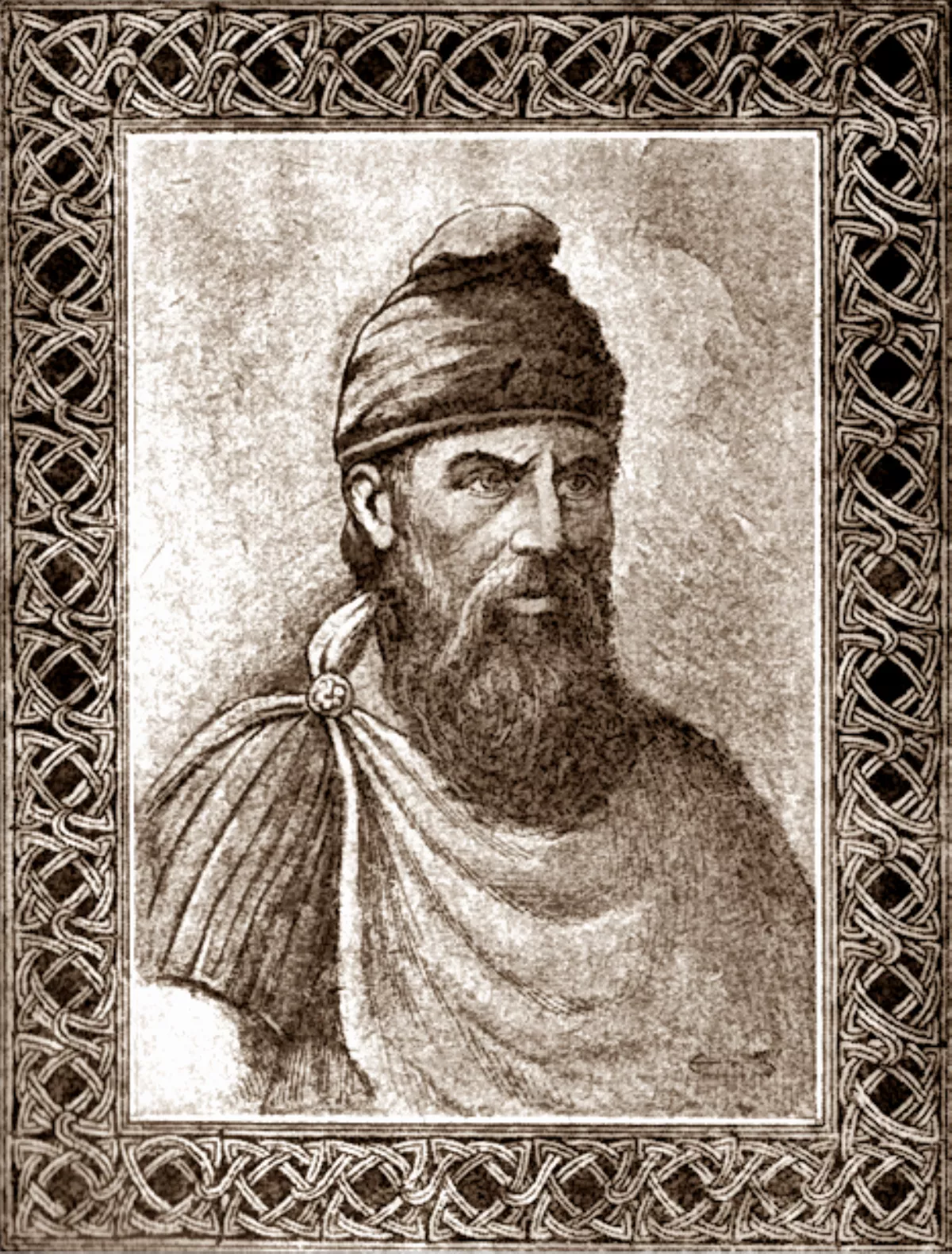 1.
1. Decebalus, sometimes referred to as Diurpaneus, was the last Dacian king.

 1.
1. Decebalus, sometimes referred to as Diurpaneus, was the last Dacian king.
Decebalus is famous for fighting three wars, with varying success, against the Roman Empire under two emperors.
Decebalus was defeated in 102 AD, and his own sister was abducted within this timeframe and forcibly wed into Roman nobility, causing some historians to infer that she was the ancestress of the usurper, Regalianus, who claimed to be a kinsman of Decebalus.
Decebalus remained in power as a client king, but continued to assert his independence, leading to a final and overwhelming Roman invasion north of the Danube in 105 AD.
Decebalus appears to have risen to prominence in the court of the Dacian king Duras, who claimed authority over all Dacian territory.
Fuscus was killed, and Decebalus was crowned king after the ageing Duras abdicated.
Decebalus agreed to pay large sums in annual tribute to the Dacians for maintaining peace.
Decebalus sent his brother Diegis to Rome to accept a diadem from the Emperor, officially recognising Decebalus's royal status.
Decebalus proceeded to centralize power and build up his fortifications and war machines, using engineers supplied by Domitian.
Decebalus's court became a haven for malcontents and deserters from the Roman empire becoming "the nucleus for anti-Roman sentiment" in the words of historian Julian Bennett.
Decebalus sought to build alliances with independent tribes, notably the Getic Bastarnae and the Sarmatian Roxolani.
Decebalus failed to secure the support of the Quadi, Marcomanni and Jazyges, but ensured that they would not interfere with his plans.
At the Second Battle of Tapae, Decebalus was defeated, but he inflicted serious losses on the Romans.
Decebalus was forced to concede defeat and accept Trajan's terms, which included the loss of some territories in the vicinity of the Danube and the dismantling of his fortresses.
Decebalus had no intention of remaining subject to Rome, or giving up his lost territory.
Decebalus annexed territory from the Jazyges and violated the peace treaty by re-arming and receiving refugees and deserters from Roman territory.
Meanwhile, Decebalus continued to disrupt Roman positions with guerrilla attacks.
Decebalus was hunted down and finally cornered by Roman detachments seeking his head.
Rather than being captured only to be exhibited and humiliated at Rome, Decebalus committed suicide by slashing his own throat, as depicted on Trajan's Column.
Decebalus was probably still alive when Maximus reached him, as is claimed on Maximus' funerary stele discovered at Gramini in Greece.
Decebalus is considered a national hero in Romania, and has been portrayed in numerous literary works, movies, public sculptures, and other memorials.
Decebalus began to be seen in these terms during the 19th century, when he came to be associated with Romantic ideals of national freedom and resistance to imperialism.
Decebalus is often paired with his enemy Trajan, with the former representing national identity and the latter the grandeur and classical values brought by Rome.
Decebalus remained a hero in the Communist era, especially in the Stalinist "national Communism" of Gheorghe Gheorghiu-Dej.
The nationalist model progressed further under Nicolae Ceausescu, under whom Decebalus was listed as one of the ten great leaders of Romania.
Decebalus was depicted as a great national leader in two major epic films in this period, The Dacians, and The Column.
Several public statues of Decebalus were set up in the Ceausescu era, including an equestrian statue in Deva created in 1978 by the sculptor Ion Jalea, and a column topped by a bust in Drobeta-Turnu Severin, created in 1972.
Decebalus was central to the nationalist protochronism movement, which identifies Romania as the cradle of east-European civilisation, and the Dacianism movement, which directly relates Romania as descendants of the Dacians.
Decebalus is quoted saying, "Anyone travelling towards 'Decebal Rex Dragan Fecit' [King Decebalus made by Dragan] is travelling towards the origins of east-European civilization and will discover that a United Europe represents the natural course of history".